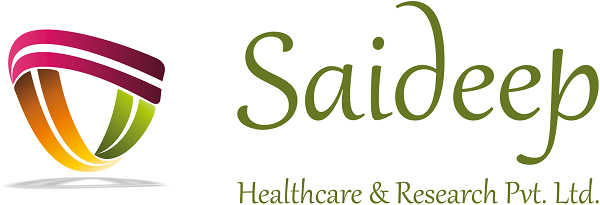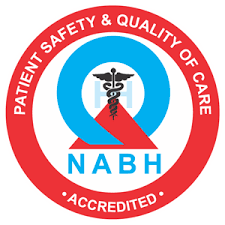A muscular Dystrophy is a group of diseases that make muscles weaker and less flexible over time. This damage and weakness are due to the lack of a protein called dystrophin, which is necessary for normal muscle function. The absence of this protein can cause problems with walking, swallowing, and muscle coordination.
For some people, the disease starts early in childhood. Others don’t have any symptoms until they are teenagers or middle-aged adults. In muscular dystrophy, abnormal genes (mutations) interfere with proteins’ production needed to form healthy muscle.
How muscular dystrophy affects an individual depends on the kind. Most people’s condition will worsen over time, and some people may lose the ability to walk, talk, or care for themselves. But that doesn’t happen to everyone. Other people can live for many years with mild symptoms.
There’s no cure for muscular dystrophy. But medications and therapy can help manage symptoms and slow the course of the disease. Some forms of muscular dystrophy may be present at birth and develop during childhood, while other forms develop during adulthood.
Muscular dystrophy can be hereditary as well. More than 30 types of muscular dystrophy result in muscle weakness, which varies in symptoms and severity. There are nine different categories used for diagnosis. Let us explore each type in detail.

Types of Muscular Dystrophy
Duchenne muscular dystrophy: This type of muscular dystrophy is the most common among children. The majority of individuals affected are boys. It’s rare for girls to develop it. The symptoms include:
- trouble walking
- loss of reflexes
- difficulty standing up
- poor posture
- bone thinning
- scoliosis, which is an abnormal curvature of your spine
- mild intellectual impairment
- breathing difficulties
- swallowing problems
- lung and heart weakness
People with Duchenne muscular dystrophy typically require a wheelchair before their teenage years. The life expectancy for those with this disease is late teens or 20s.
Becker muscular dystrophy: Becker muscular dystrophy is similar to Duchenne muscular dystrophy, but it’s less severe. This type of muscular dystrophy also more commonly affects boys. Muscle weakness occurs mostly in your arms and legs, with symptoms appearing between age 11 and 25.
Other symptoms of Becker muscular dystrophy include:
- walking on your toes
- frequent falls
- muscle cramps
- trouble getting up from the floor
Many with this disease don’t need a wheelchair until they’re in their mid-30s or older, and a small percentage of people with this disease never require one. Most people with Becker muscular dystrophy live until middle age or later.
Congenital muscular dystrophy: Congenital muscular dystrophies are often apparent between birth and age 2. This is when parents begin to notice that their child’s motor functions and muscle control aren’t developing as they should. Symptoms vary and may include:
- muscle weakness
- poor motor control
- inability to sit or stand without support
- scoliosis
- foot deformities
- trouble swallowing
- respiratory problems
- vision problems
- speech problems
- intellectual impairment
While symptoms vary from mild to severe, most people with congenital muscular dystrophy are unable to sit or stand without help. The lifespan of someone with this type also varies, depending on the symptoms. Some people with congenital muscular dystrophy die in infancy, while others live until adulthood.
Myotonic dystrophy: Myotonic dystrophy is also called Steinert’s disease or dystrophia myotonica. This form of muscular dystrophy causes myotonia, an inability to relax your muscles after they contract. Myotonia is exclusive to this type of muscular dystrophy.
Myotonic dystrophy can affect your:
- facial muscles
- central nervous system
- adrenal glands
- heart
- thyroid
- eyes
- gastrointestinal tract
Symptoms most often appear first in your face and neck. They include:
- drooping muscles in your face, producing a thin, lean look
- difficulty lifting your neck due to weak neck muscles
- difficulty swallowing
- droopy eyelids, or ptosis
- early baldness in the front area of your scalp
- low vision, including cataracts
- weight loss
- increased sweating
This dystrophy type may also cause impotence and testicular atrophy in males. In women, it may cause irregular periods and infertility.
Myotonic dystrophy diagnoses are most common in adults in their 20s and 30s. The severity of symptoms can vary greatly. Some people experience mild symptoms, while others have potentially life-threatening symptoms involving the heart and lungs.
Facioscapulohumeral (FSHD): Facioscapulohumeral muscular dystrophy (FSHD) is also known as Landouzy-Dejerine disease. This type of muscular dystrophy affects the muscles in your face, shoulders, and upper arms. FSHD may cause:
- difficulty chewing or swallowing
- slanted shoulders
- a crooked appearance of the mouth
- a wing-like appearance of the shoulder blades
A smaller number of people with FSHD may develop hearing and respiratory problems.
FSHD tends to progress slowly. Symptoms usually appear during your teenage years, but they sometimes don’t appear until your 40s. Most people with this condition live a full life span.
Limb-girdle muscular dystrophy: Limb-girdle muscular dystrophy causes weakening of the muscles and a loss of muscle bulk. This type of muscular dystrophy usually begins in your shoulders and hips, but it may also occur in your legs and neck. You may find it hard to get up out of a chair, walk up and downstairs, and carry heavy items if you have limb-girdle muscular dystrophy. You may also stumble and fall more easily.
Limb-girdle muscular dystrophy affects both males and females. Most people with this form of muscular dystrophy are disabled by age 20. However, many have an average life expectancy.
Oculopharyngeal muscular dystrophy (OPMD): Oculopharyngeal muscular dystrophy causes weakness in your facial, neck, and shoulder muscles. Other symptoms include:
- drooping eyelids
- trouble swallowing
- voice changes
- vision problems
- heart problems
- difficulty walking
OPMD occurs in both men and women. Individuals usually receive diagnoses in their 40s or 50s.
Distal muscular dystrophy: Distal muscular dystrophy is also called distal myopathy. It affects the muscles in your:
- forearms
- hands
- calves
- feet
It may also affect your respiratory system and heart muscles. The symptoms tend to progress slowly and include a loss of fine motor skills and difficulty walking. Most people, both male and female, are diagnosed with distal muscular dystrophy between 40 and 60.
Emery-Dreifuss muscular dystrophy: Emery-Dreifuss muscular dystrophy tends to affect more boys than girls. This type of muscular dystrophy usually begins in childhood. The symptoms include:
- weakness in your upper arm and lower leg muscles
- breathing problems
- heart problems
- shortening of the muscles in your spine, neck, ankles, knees, and elbows
Most individuals with Emery-Dreifuss muscular dystrophy die in mid-adulthood from heart or lung failure.
Treatment for muscular dystrophy
There is currently no cure for muscular dystrophy.
To help ease discomfort, reduce joint contractures, and prevent or delay scoliosis, physiotherapists offer advice on stretches and exercises and the prescription of orthoses and other orthopedic devices. Occupational therapists also provide advice on sitting positions and activities. Such treatment can keep affected people walking for more extended and maximize independence in daily living. Treatments depend on your symptoms.
Treatment options include:
- corticosteroid drugs, which help strengthen your muscles and slow muscle deterioration
- assisted ventilation if respiratory muscles are affected
- medication for heart problems
- surgery to help correct the shortening of your muscles
- surgery to repair cataracts
- surgery to treat scoliosis
- surgery to treat cardiac problems
Therapy has proven to be effective. You can strengthen your muscles and maintain your range of motion using physical therapy. Occupational therapy can help you:
- become more independent
- improve your coping skills
- improve your social skills
- gain access to community services
Check out our recent blog – https://www.saideephospital.com/2021/01/15/anorexia-the-sickness-that-robs-your-fitness/
Visit here for daily updates – https://www.instagram.com/saideephealthcareofficial/


